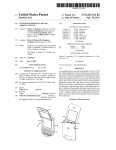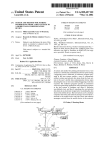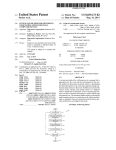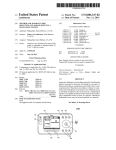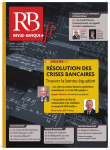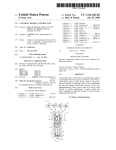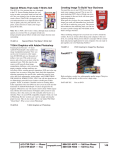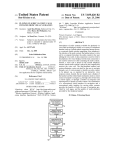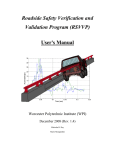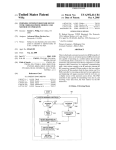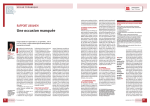Download Automatic discovery of metadata
Transcript
US008140570B2 (12) United States Patent I II (54) (10) Patent N0.2 rassiae t a. l US 8,140,570 B2 360 fPt aen: 45Dt t AUTOMATIC DISCOVERY OF METADATA . 6,407,750 B1 6,418,330 B1 . 6,487,663 B1 (75) Inventors: Michael IngrassIa, San Jose, CA (US); Jeffery Lee, Sunnyvale, CA (Us); Dave 6,510,210 B1 6,516,466 B1 Rempel, San Jose, CA (US) 6,526,335 B1 M ar. 20,2012 6/2002 GiOSCia et a1~ 7/2002 Lee 11/2002 J ' 'mh t V2003 gglsllghaie a 2/2003 Jackson l. 2/2003 TreyZ et a1. (Continued) (73) Assignee: Apple Inc., Cupertino, CA (US) FOREIGN PATENT DOCUMENTS ( * ) Notice: Subject' to any disclaimer, the term of this patent is extended or adjusted under 35 EP 0744839 1 H1996 (Continued) U.S.C. 154(b) by 182 days. (21) Appl. No.: 12/722,327 OTHER PUBLICATIONS Jane Greenberg, “Metadata Extraction and Harvesting: A compari son of Two Automatic Metadata Generation Applications”, Journal of Internet Cataloging, 2004* (22) Filed: Mar. 11, 2010 (65) Prior Publication Data US 2011/0225178 A1 Sep. 15, 2011 (51) Int- Cl- (Continued) Primary Examiner * Hung Le (74) Attorney, Agent, or Firm * Kramer Levin Naftalis & G06F 17/30 (52) Frankel LLP US. Cl. ...... .. 707/770; 707/600; 707/610; 707/661; 707/706; 707/736; 707/758; 706/10; 706/15; (57) 709/291; 799/217; 709/246; 715/733; 725/37 This is directed to processing stored data to automatically Field of ‘Classi?cation Search ............. ..: ...... .. None generate metadata for the stored data In particular, this is See apphcanon ?le for Complete Search hlstory' directed to identifying metadata associated With stored data, _ (58) (2006.01) _ (56) and identifying other data that relates to the stored data from one or more sources. A processing module can identify other data sharing some of the identi?ed metadata, and can extract References Cited U.S. PATENT DOCUMENTS 5,341,350 A 5,557,541 A 5,983,073 A 8/1994 Frank et a1. 9/1996 Schulhof et a1. 11/1999 Ditzik 6,047,054 6,160,551 6,192,340 6,255,961 6,259,892 6,314,094 6,339,706 4/2000 12/2000 2/2001 7/2001 7/2001 11/2001 1/2002 A A B1 B1 B1 B1 B1 6,353,637 B1 6,401,085 B1 ABSTRACT additional metadata associated With the identi?ed other data. The extracted metadata can then be associated With the user’ s stored data. The processing module can extract additional metadata from any suitable source, including for example local application data, social netWorks or blogging sources, Bayless et al. Naughton et al. Abecassis Van RyZin et a1. Helferich Boys Tillgren et al. and other remote sources. In some embodiments, an elec tronic device can retrieve data from other users for a particular event based on metadata associated With the user’s data for the event to form a master collection of data. 3/2002 Mansour et al. 6/2002 Gershman et al. 11 Claims, 10 Drawing Sheets 902 )/900 Identify metadata P904 associated with data 906 Identify application data P’ corresponding to identified metadata Extract additional metadata from identilied application data and social network stream '“ US 8,140,570 B2 Page 2 Rodriguez et al, “Automatic Metadata Generation Using Associative Networks”, ACM, 2009* US. PATENT DOCUMENTS 6,559,773 B1 5/2003 Berry 6,587,127 6,658,247 6,728,531 6,772,212 6,823,225 6,845,398 6,901,067 6,907,112 6,915,272 6,917,923 B1 B1 B1 B1 B1 B1 B1 B1 B1 B1 7/2003 12/2003 4/2004 8/2004 11/2004 1/2005 5/2005 6/2005 7/2005 7/2005 Lee on Kee, “Automatic Tag Recommendation for the Web2.0 Leeke et al. Saito Lee et al. Lau et al. Sass Blogosphere” City University of Hong Kong, Department of Com puter Science, Jun. 2008, pp. 1-105. Marek LipcZak, “Tag Recommendation for Folksonomies Oriented towards Individual Users” Dalhousie University, Faculty of Com puter Science, 2008, pp. 1-12. Galensky et al. Kalavade Guedalia et al. Zilliacus et al. Dimenstein 6,973,299 B2* 12/2005 Apfel ....................... .. 455/4122 7,058,220 7,065,342 7,131,059 7,187,947 7,440,772 7,444,353 7,486,926 7,526,718 7,634,228 6/2006 6/2006 10/2006 3/2007 10/2008 10/2008 2/2009 4/2009 12/2009 Obrador Rolf Obrador White et al. White et al. Chen et al. White et al. Samadani White et al. B2 B1 B2 B1 B2 B1 B2 B2 B2 7,711,722 B1* 2002/0010759 2002/0046084 2002/0164973 2004/0217884 2004/0218894 2004/0218895 2004/0220965 A1 A1 A1 A1 A1 A1 A1 2006/0242178 A1 * 2007/0271297 A1* 2008/0066100 A1* 5/2010 Jun. 21, 1999 (http://?ndarticles.com/p/aIticles/mifmOEIN/isi 1999iJunei21/aii54937451/), retrieved Aug. 5, 2009. Cellular for Notebook PCs. CIO vol. 13, No. 1, Section 1, p. 90, Oct. 1, 1999. “Briefs: Sierra Wireless . . . ” NetworkWorld vol. 16, No. 34, p. 27, Aug. 23, 1999. “Speci?cation ofthe Bluetooth System, vol. 1.” pp. 1-1080, Nov. 29, Sahasi et al. ................ .. 707/705 Hitson et al. Steele et al. Janik et al. Samadani et al. Harville et al. Samadani et al. Harville et al. 10/2006 11/2007 3/2008 Butter?eld et al. ......... .. 707/100 Jaffe et al. ................ .. 707/1041 Brodersen et al. ............ .. 725/35 2008/0162358 A1 7/2008 Patsiokas et al. 9/2008 2009/0006285 A1 1/2009 Meek et al. 1999. “Digital Cellular Telecommunications System (Phase 2+); General Packet Radio Service (GPRS); Overall Description of the GPRS Radio Interface; Stage 2 (GSM 03.64 version 6.0.1 Release 1997)” pp. 1-56, Aug. 1998. “Digital Cellular Telecommunications System (Phase 2+); General Kobayashi et al. ........... .. 84/601 2009/0063419 A1* 3/2009 Nurminen et al. .............. .. 707/3 2009/0063975 2009/0070370 2009/0100068 2009/0125609 2009/0158155 2009/0248610 2009/0254540 2009/0326949 3/2009 Bull et al. A1 A1 A1 A1 A1 A1 A1 A1 Packet Radio Service (GPRS); Overall Description of the GPRS Radio Interface; Stage 2 (GSM 03.64 version 6.1.0 Release 1997)” pp. 1-42, Oct. 1998. “Digital Cellular Telecommunications System (Phase 2+); General Packet Radio Service (GPRS); Overall Description of the GPRS Radio Interface; Stage 2 (GSM 03.64 version 6.2.0 Release 1997)” pp. 1-42, May 1999. 3/ 2009 Cunningham et al. “Digital Cellular Telecommunications System (Phase 2+); General 4/ 2009 Gauba et al. 5/2009 Wood et al. Packet Radio Service (GPRS); Overall Description of the GPRS Radio Interface; Stage 2 (GSM 03.64 version 6.3.0 Release 1997)” pp. 1-42, Jul. 1999. 6/ 2009 Quinn et al. 10/2009 Sigurbjornsson et al. 10/ 2009 Musgrove et al. “Digital Cellular Telecommunications System (Phase 2+); General 12/ 2009 Douthitt et al. 2010/0088317 A1* 4/2010 Bone et al. .................. .. 707/737 2010/0131505 A1* 5/2010 Erickson ...... .. 2010/0161629 A1* 6/2010 Palanisamy et al. ........ .. 707/756 . 707/736 FOREIGN PATENT DOCUMENTS EP EP JP JP JP JP KR WO WO 1999. “Speci?cation of the Bluetooth System, vol. 2.” pp. 1-438, Nov. 29, 1/2002 4/ 2002 11/2002 11/2004 11/2004 11/2004 11/2004 2008/0229910 A1 * Orubeondo, “Trim AirCard 300 Eases Power Demands.” InfoWorld vol. 21, Issue 48, pp. 46 & 50, Nov. 29, 1999. “Sierra Wireless Announces First Cellular Network Interface Card for Notebook PCs; The AirCard 300 for Windows Changes the Way Notebook PC Users Make Wireless Connections.” Business Wire, 0898378 0918408 8-006875 11-164058 11-242686 11-317061 1999-0073234 00/054462 2007144030 A1 2/1999 5/1999 1/1996 6/1999 9/1999 11/1999 10/1999 9/2000 12/2007 OTHER PUBLICATIONS Greenberg et al, Final Report for the AMeGA (Automatic Metadata Generation Applications) Project, University of North Carolina at Chapel Hill, 2005.* Packet Radio Service (GPRS); Overall Description of the GPRS Radio Interface; Stage 2 (GSM 03.64 version 7.0.0 Release 1997)” pp. 1-41, Jul. 1999. Cai et al. “General Packet Radio Service in GSM” IEEE Communi cations Magazine, Oct. 1997, pp. 122-131. “Part 11: Wireless LAN Medium Access Control (MAC) and Physi cal Layer (PHY) Speci?cations.” IEEE Std 802.11-1997, pp. 1-445. Lind et al. “The Network VehicleiA Glimpse into the Future of Mobile Multi-Media.” IEEE, pp. I21-1-I21-8, 1998. Nokia Quick Guide, Accessories Guide, pp. 1-31, 1999. Nokia 9110i User’s Manual, pp. 1-190, 1999. Qualcomm QCP+1960TM, Sprint PCS User Guide, pp. 1-76, Apr. 1999. Samsung Model SCH-3500, Sprint PCS User Guide, pp. 1-108, 1999. StarTAC, Sprint PCS User Guide, pp. 1-118, Mar. 1999. Visteon: for Your Listening PleasureiAny Music, Any Time, Anwhere (http ://www2 .prnewswire .com/c gi-bin/ stories. pl?ACCT:104&STORY:/www/story/01-05-2000/0001107812 &DATE ), originally retrieved Jan. 5, 2000. Mori et al, “Keyword Extraction from the Web for Personal Metadata Annotation”, University of Tokyo, Japan, 2004* * cited by examiner US. Patent Mar. 20, 2012 Sheet 1 0110 US 8,140,570 B2 100 \ Data _/102 j/110 Metadata Sensor-based ~/'112 Content /’114 Content based User entered FIG. 1 ' /"116 US. Patent Mar. 20, 2012 200\ 212 \" 214 \—~ 216 218\._ \~ 220 \222 \~ 210 Sheet 2 0f 10 240 / Fiel ol 2/30 / / Metadata Event Joe's birthday Location -/242 Golden Gate Park J 244 J246 People 248 Time Motion US 8,140,570 B2 12:43PM / 250 0.12, 0.56, 2.82 J Color palette 224\_/~e o o J252 o o o 22a Sensor-based ~/256 FIG 2 302 @ilrlmal Metadata ovie data 310~/'\ Event On Location On Orientation People FIG. 3 / Off On Colors Off Motion Off Description Off Tag 1 O" / US. Patent Mar. 20, 2012 Sheet 3 0f 10 400\ 410M Storage 430 402~ Processing Module 432 Input/Output Interface 420/” FIG. 4 US 8,140,570 B2 US. Patent 500 Mar. 20, 2012 Sheet 4 0f 10 US 8,140,570 B2 \ 502 \ ?oe's Birthday Party 51 O—/*|ocation Golden Gate Park all day [I 520 from 02l14/201011:0 AM to 02l14l20104=00PM timezone Paci?cTime¢ repeat None; show as Busy : calendar III Home: 530 alarm None: \ wvitees Joe; Sam; Mike attachments Add File... url None note None Done FIG. 5 US. Patent Mar. 20, 2012 Sheet 5 or 10 US 8,140,570 B2 600 602 Joe's Feed 610 \- 2/14, 5:12 PM: Too bad @Jenn couldn't be here 2/14, 11:24AM: @Ron showed up! 71; 2/14, 10:22 AM: @Sam and | grabbing picnic 2/14, 9:00 AM: Time to run with @Joe 620\ 2/13, 11 :42 PM: Great bar! 2/13, 9:32 PM: Going out tonight FIG. 6 700 \ Metadata Selection 710 712 \\ _ Location San Francisco /722 Central Park, NY 714_/_ Ron People Sam Jenn I: IG. 7 ,724 US. Patent Mar. 20, 2012 US 8,140,570 B2 Sheet 6 0f 10 800 Retrieve stored data 806 V Review metadata associated with stored data 810 808 Empty metadata 812 fields? Yes Identify empty metadata fields V Extract metadata from local resources 8 820 \ Extract metadata from l Identify social network streams of interest remote resources 822 v V Extract metadata from identified social network streams r” Select from extracted metadata for stored data if 810 End FIG. US. Patent Mar. 20, 2012 Sheet 7 0f 10 US 8,140,570 B2 902 900 z Start , ) " 904 Identify metadata associated with data »-/ " 906 Identify application data / corresponding to identified metadata . . " 908 Identify social network stream / corresponding to identified metadata ‘i 910 Extract additional metadata from identified application data and social network stream 0 End FIG. 9 912 "J US. Patent Mar. 20, 2012 Sheet 8 0f 10 US 8,140,570 B2 1000\ Content from event 101\O Data 1 1012,‘, Local data Data 2 R 1 1014~/ em 8 Source 1022 ’"_’ Social Network 1 Social Network 2 Internet FIG. 10 *~—/1024 US. Patent Mar. 20, 2012 Sheet 9 0f 10 1100\ 1102 1104 Receive a selection of a user's data 1106\ i Retrieve metadata associated with the selected data 1108\ $ Identify other data associated with the retrieved metadata 1110\ l Provide the identified other data to the user 1112 FIG. 11 US 8,140,570 B2 US. Patent Mar. 20, 2012 Sheet 10 0f 10 1 200 Electronic Device 1202 \—~ Processor 1204i _‘ Storage 1203 '_ Memory 1208 \_ Input/Output interface 1210 \"" Communications circuitry FIG. 12 US 8,140,570 B2 US 8,140,570 B2 1 2 AUTOMATIC DISCOVERY OF METADATA An electronic device can generate or access data for a user. To assist the user in classifying and managing the data, the BACKGROUND data can be associated With metadata. While some metadata can be automatically associated With the data When the data is This is directed to tagging stored data, such as media, With initially generated (e.g., When an image is captured), some automatically discovered metadata. Metadata can be auto matically discovered based on known or available metadata be used to generate ?les containing different types of infor metadata may be typically added manually, Which can be a burdensome task. To automate the metadata association process, a processing module can revieW the initial metadata associated With data, and identify other information related to the initial metadata. For example, a processing module can revieW data used by applications of an electronic device, and extract metadata mation (e. g., media ?les, data ?les, documents, spreadsheets, from the application data. In particular, a processing module or presentations). To assist the user in classifying or organiZ ing the data, or to assist the user or others in searching for the data (e.g., if the data is later stored in a remote location), different metadata can be associated With the data. The meta can retrieve event information from a calendar, and apply metadata extracted from the event information to data having a time stamp corresponding to the event time. In some embodiments, the processing module can identify for the stored data by identifying other data also associated With the knoWn metadata. Electronic devices can generate, capture, store or access different types of data. For example, an electronic device can data can include, for example, information providing the identity of the user generating or editing the data, the content of the data, the location or time at Which the data Was gener ated to edited, user-de?ned tags, or other attributes of the data. Different metadata can be associated With stored data using any suitable approach. In some embodiments, some metadata can automatically be associated With data When the data is entries in one or more social netWorks that relate to the data. 20 For example, the processing module can identify social net Work streams associated With the user accessing the data, or With friends of the user accessing the data and extract meta data from the social netWork streams. In particular, the pro cessing module can identify people Who could be in the data 25 initially generated. For example, metadata associated With an application used to generate the data, the person oWning a content (e. g., event attendees), the event location, or any other metadata that can be extracted from the social netWork streams. In some embodiments, the processing module can license to use the application, the date and time at Which the instead or in addition search for data from remote sources as application Was used, various settings describing the format a Whole (e. g., search some or all of the Internet), and extract additional metadata from the search data that shares at least some metadata With the user’s data. In some embodiments, the electronic device can instead start from the user’s data, and search a social netWork or a larger remote source (e.g., the internet) for some or all of the of the data (e.g., the font and paragraph information of a text 30 document), or an Internet address of a device used to generate the data can be automatically generated and associated With the data by the device used to generate the data. In some embodiments, metadata can be associated With stored data at a later time. For example, metadata providing a time stamp, 35 a particular user, or other such metadata can be automatically associated With stored data When the data is accessed or data that corresponds to the user’s data. For example, the electronic device can identify the particular set of metadata associated With the user’ s data, and search for other data that edited. shares some or all of the metadata With the user’s data. the identity of a user editing data, a listing of changes made by In some embodiments, a user can instead or in addition 40 manually modify metadata associated With stored data. For BRIEF DESCRIPTION OF THE DRAWINGS example, a user can access a menu or display associated With The above and other features of the present invention, its nature and various advantages Will be more apparent upon the stored data, and remove, add, or change metadata listed in the menu. In some cases, a user can add a neW metadata ?eld. As another example, a user can remove all metadata associ 45 ated With data prior to sending the data to another user (e.g., scrub a ?le before sending it via email). As still another FIG. 1 is a schematic vieW of illustrative data that can be generated, accessed, or edited by an electronic device in accordance With one embodiment of the invention; example, a user can select several data ?les, and simulta neously change the metadata for the collection of data ?les (e. g., so that they all have the same or different metadata). When an electronic device automatically associates meta data With a media item, hoWever, the electronic device may only be able to provide metadata for a limited number of 50 FIG. 3 is a schematic vieW of an illustrative interface for 55 de?ning a set of essential metadata ?elds in accordance With one embodiment of the invention; FIG. 4 is a schematic vieW of an illustrative system for managing metadata in accordance With one embodiment of the invention; FIG. 5 is a schematic vieW of an illustrative calendar entry an electronic device that does not include a clock may not be able to provide time stamp metadata. FIG. 2 is a schematic vieW of illustrative metadata associ ated With data in accordance With one embodiment of the invention; ?elds. In particular, the speci?c metadata automatically pro vided for stored data can be constrained by the capabilities of the electronic device generating the data. For example, a device that does not include positioning circuitry may not be able to provide location-based metadata. As another example, consideration of the folloWing detailed description, taken in conjunction With the accompanying draWings in Which: 60 SUMMARY used for extracting metadata in accordance With one embodi ment of the invention; FIG. 6 is a schematic vieW of an illustrative social netWork ering other data sharing characteristics With the stored data, ing stream used to extract metadata for data in accordance With one embodiment of the invention; FIG. 7 is a schematic vieW of an illustrative display for selecting metadata to apply to a ?eld in accordance With one and applying metadata of the other data to the stored data. embodiment of the invention; This is directed to automatically identifying metadata to apply to stored data. In particular, this is directed to discov 65 US 8,140,570 B2 4 3 for example text, numerical, image, video, audio, or combi FIG. 8 is a ?owchart of an illustrative process for automati cally identifying metadata to associate With stored data in nations of these. In one implementation, data 100 can include accordance With one embodiment of the invention; media played back by a device, or media captured by a device. Content 102 can include image, video or audio tracks that can FIG. 9 is a ?owchart of an illustrative process for associ be played back separately or simultaneously, or can be edited or modi?ed independently or simultaneously. Each track can ating additional metadata With data in accordance With one embodiment of the invention; be encoded using any suitable approach, including for FIG. 10 is a schematic vieW of an illustrative display for example using primary frames (e.g., I-frames) and secondary identifying other data corresponding to selected data in accor dance With one embodiment of the invention; frames (e. g., P or B-frames), or a sequence of full frames (e. g., ing data from disparate sources to provide a comprehensive individual audio sequences). To provide a complete and functional classi?cation system, collection of data corresponding to an event in accordance With one embodiment of the invention; and data 100 can be associated With different metadata 110 that can be catalogued, indexed, and searched. Metadata 110 can FIG. 12 is a schematic vieW of an illustrative electronic be associated With content 102 using any suitable approach. device for playing back media in accordance With one embodiment of the invention. For example, metadata can be stored as part of data 100 that includes the content (e.g., metadata 110 forms a header in a ?le). As another example, metadata 110 can be stored in a FIG. 11 is a ?oWchart of an illustrative process for compil separate location from the content. In particular, metadata DETAILED DESCRIPTION 110 can be stored in a metadata ?le (e.g., one ?le for each An electronic device can be operative to generate or receive 20 data. The data can include, for example, text, numbers, spreadsheets, presentations, images, audio, video, or combi location. If the metadata is stored separately from the content, nations of these. For example, the data can include media stored or accessed by the device. In particular, media can include images, photographs, video, voice or audio record ings, text (e. g., blogging or micro-blogging streams), location 25 streams, or combinations of these. For the simplicity of the folloWing discussion, hoWever, different embodiments of the invention Will be described in the context of the management of media and the association of metadata to the media. As electronic devices become more adept at capturing media, as purchasing media becomes easier, and as remote 30 the metadata can be associated With the content using any suitable approach, including for example one or more refer ences in the metadata and/or content, pointers, links, or other combinations of these. Metadata 110 can include any suitable type of metadata. For example, metadata 110 can include sensor-derived meta data 112. Such metadata can include, for example, the output of one or more sensors or sensing mechanisms of an elec tronic device used to capture or generate the data (e.g., the media). The sensors can include, for example, motion detec sources of media become easily accessible, many users can ?nd that they have access to or manage a large media library. To enhance the users’ ability to navigate through, locate, and instance of content), a database (e. g., metadata database Within an electronic device or Within a particular application), remote location (e.g., a remote server), or any other suitable 35 share speci?c media items, many users use metadata to tag and classify the media items. It may be dif?cult and time tion components (e.g., an accelerometer), location sensing components (e.g., GPS or cellular tower-triangulation cir cuitry), cameras (e. g., or other image capturing sensors), clock, or combinations of these. consuming, hoWever to individually or collectively tag dif In some embodiments, metadata 110 can instead or in ferent media items by hand. Some metadata can be automati cally associated With media items by the device used to gen erate the media item or by a device used to vieW the media addition include content-based metadata 114. For example, 40 for example, color analysis or pro?le, voice recognition out item. For example, some metadata can be identi?ed based on the output of sensors associated With the device used to gen erate the media item. Such metadata can include, for example, location, orientation, time, temperature, or vibration/move puts, facial recognition outputs, object recognition outputs, information describing landmarks in the data, stabiliZation 45 ment metadata. Other metadata can include, for example, metadata retrieved from the content of the media item. Such metadata can include, for example, color, texture, face detec tion, image recognition output, and voice recognition meta data. This metadata, hoWever, is limited or restricted by the sensors available to the device, and the information knoWn to the device about the user’s library (e.g., Who a particular detected face is, or Whose voice is selected). The provided metadata can therefore be enhanced by augmenting it With an electronic device can analyZe the content of data, and extract attributes of the content. Such metadata can include, 50 information, or any other information extracted from the con tent of the data (e.g., the media content). The content-based metadata can be generated at any suitable time and using any suitable device. For example, some content-based metadata can be generated after post-processing data (e. g., using a device used to access the data) and later associated With the data. In some cases, the electronic device generating the data can analyZe data as it is captured to extract content-based metadata. In some embodiments, metadata 110 can instead or in 55 addition include metadata entered or de?ned by the user. For additional metadata from remote sources (e.g., cloud-based example, a user can add metadata in one or more ?elds asso sources). In addition, metadata tags retrieved from remote ciated With data. As another example, a user can modify an automatically generated metadata ?eld. The user can enter sources can be prioritized such that only a subset of metadata identi?ed from a remote source is selected, Where the remotely identi?ed metadata most closely matches the spe ci?c metadata that a user Would provide for media in the user’ s library. FIG. 1 is a schematic vieW of illustrative data that can be generated, accessed, or edited by an electronic device in accordance With one embodiment of the invention. Data 100 can include content 102 and metadata 110 associated With the data. Data 100 can include any suitable type of data, including any suitable metadata for stored data, including for example 60 tags or notes of interest or use only to the user (e.g., a “print these” tag for pictures, or “process” tag for media that has been captured but not yet revieWed or sorted). When an electronic device accesses data, the electronic device can revieW the metadata associated With the data. For 65 example, the electronic device can identify the types of meta data that are associated With data by determining the catego ries or ?elds of metadata for Which metadata is available. In US 8,140,570 B2 5 6 some embodiments, it may be desirable to have metadata in at least a threshold or minimum set of metadata categories. For the location or people shoWn in an image or video. As another instance of data, for each type of data (e.g., based on a meta data type ?eld, or based on a ?le type), or for each device used to capture or access data. In some embodiments, display 300 can include title 302 depicting the type of data or device to example, it may be desirable to include metadata used for Which the display corresponds. classifying the data (e.g., location, people, event, or timing Any suitable component, process, or module of the elec tronic device can manage the association of metadata With data. FIG. 4 is a schematic vieW of an illustrative system for managing metadata in accordance With one embodiment of example, it may be desirable to include metadata depicting metadata). FIG. 2 is a schematic vieW of illustrative metadata associated With data in accordance With one embodiment of the invention. Metadata structure 200 can include different categories of metadata. For example, metadata structure 200 the invention. System 400 can include processing module 402 operative to control the association of metadata With data. For example, processing module 402 can de?ne links or pointers betWeen metadata and data. Processing module can be imple mented as part of any suitable electronic device component, can include categories or ?elds of metadata 210 and corre sponding metadata 240 associated With some or all of the ?elds. Any suitable ?eld can be provided in ?elds 210. For example, structure 200 can include event ?eld 212, location including for example as part of processing circuitry, ?eld 214, people ?eld 216, and time ?eld 218. In addition, memory, storage, or combinations of these. In some embodi structure 200 can include motion ?eld 220, color palette ?eld 222, and tag ?eld 226. Structure 200 can have any suitable ments, processing module 402 can direct other electronic number of ?elds, including for example more ?elds than shoWn (e.g., as depicted by dots 224). Structure 200 can tions for retrieving metadata. Processing module 402 can retrieve speci?c data from storage 410 via communications path 430. Storage 410 can device components to perform one or more speci?c opera 20 include metadata in column 240 in Which metadata can be stored for some or all of ?elds 210. In the example of structure 200, metadata may be available for metadata blocks 242, 244, 248 and 250, but not available for blocks 246, 252 and 256 corresponding to ?elds 210 to 226, respectively. include any suitable local or remote storage, including for example storage accessed over a netWork (e.g., Web-based storage or storage provided as part of a social netWork). 25 Any suitable information can be stored as metadata 240. For example, individual metadata can include text (e.g., one or more Words), numbers, images or icons, links to other embodiments, the communications path can be selected information (e.g., hyperlinks), or any other suitable informa tion. In some embodiments, metadata can be formatted in a 30 manner corresponding to the ?eld. For example, metadata related to location can be provided as coordinates (e.g., lati tude and longitude), a GPS input, an address, or a landmark. As another example, motion metadata can be provided as the raW output of an accelerometer (e.g., a voltage along three different axes), a measure of acceleration (e.g., in N/m2 or G), Communications path 430 can include a communications path over any suitable Wired or Wireless netWork. In some based on communications circuitry available to the device. In some embodiments, processing module 402 can receive speci?c instructions from a user regarding Which metadata to associate With particular data. For example, a user can enter metadata associated With one or more speci?c ?elds. Process ing module 402 can receive user instructions, and provide information to display (e.g., menus shoWing metadata for 35 particular data) using input/output interface 420. Input/ output interface 420 can include any suitable combination of hard Ware and softWare, including for example one or more dis or as a threshold value indicating the orientation of the device (e. g., portrait or landscape). In some embodiments, metadata plays, audio output interfaces, input interfaces, or combina can include several distinct instances of information corre tions of these. In some embodiments, one or more elements of sponding to a particular ?eld (e.g., a list of people or land marks in an image). 40 nicate With input/output interface 420 using communications In some embodiments, a subset of ?elds 210 can be iden path 432, Which can have some or all of the properties of ti?ed as more important or more relevant to the user. For communications path 430. example, the ?elds of set 230 (With bold outlines) can be identi?ed as a minimum set of ?elds for Which metadata is to be provided for a user to have a suitable experience interact 45 de?ned using any suitable approach. For example, the ?elds may not have the capabilities required for generating meta 50 selected as part of a minimum or essential set for different types of data (e. g., different metadata for media and for text documents). In some embodiments, a user can de?ne the particular set of metadata that is most important for stored 55 data. FIG. 3 is a schematic vieW of an illustrative interface for de?ning a set of essential metadata ?elds in accordance With one embodiment of the invention. Display 300 can include listing 310 of metadata ?elds, and corresponding options 320 for each of the ?elds. A user can toggle options 320 to select the speci?c metadata ?elds to serve as essential ?elds for a device or for particular data. Listing 310 can include any suitable metadata ?eld, including for example all of the ?elds, a default set of ?elds, or a subset of the ?elds. In some embodiments, a user can add ?elds to listing 310, for example by calling a secondary display or pop-up menu. In some implementations, a display 300 can be called up for each While some of this metadata can be automatically gener ated by the device capturing the data or by a device used to access the data, some devices may not have the capabilities required to generate the metadata. In particular, some devices ing With the data. The particular ?elds of set 230 can be can be automatically selected by a particular electronic device, or for a particular type of data. In one implementation, different sets of metadata (e.g., different ?elds) can be input/output interface 420 can be remote from the device of processing module 402. Processing module 402 can commu 60 data in all of the essential ?elds corresponding to the data. It may therefore be desirable for a processing module to auto matically add the metadata for at least the minimum or essen tial set of metadata ?elds (e.g., as de?ned by default or by the user using a display such as display 300, FIG. 3). Once the electronic device has identi?ed the essential metadata ?elds that are empty for particular data, or other metadata ?elds for Which it Would be desirable to acquire metadata to associate With data, the processing module can identify different sources from Which to retrieve the metadata. In some embodiments, the processing module can go through a progression of sources for ?nding additional metadata. For example, the processing module can ?rst look at information available from the user’s electronic device or from other electronic devices used by the user. As another example, the 65 processing module can connect to one or more social net Works used by the user to retrieve information from the one or more social netWorks (e.g., from metadata associated With US 8,140,570 B2 8 7 Once the processing module has extracted metadata from data provided by the user’s friends on the social network). As still another example, the processing module can connect to the local resources available from one or more of the user’s electronic devices (e.g., available from a cellular telephone, a communications device such as an iPad available from Apple Inc., and a notebook computer), the processing module can one or more remote sources and search for other data that may be related to the particular data for Which additional metadata is desired. expand the search for metadata to one or more social net As a ?rst step, a processing module can determine some Works. In particular, the processing module can identify one more social netWorks used by the user or by the user’s friends, attributes of data based on the available metadata. For the simplicity of the following discussion, the data Will be cap tured video, though it Will be understood that features of the description can apply to any other type of data. The process ing module can revieW the available metadata provided With and revieW the data made available on the social netWorks. For example, the processing module can revieW feeds or other information provided by one or more of Facebook, ?ickr, yelp, 4-square, loopt, goWalla, tWitter, linked-in, or other a video, and compare the available metadata With other infor mation available to the electronic device to extract, from the social netWorking, blogging, or micro-blogging service. The processing module can initially revieW the social netWorking streams of the user accessing or creating the data, and identify other information, additional metadata for the video. The processing module can extract additional metadata from any suitable application or application data of the device. For example, the processing module can determine a location and people Who may be in the video from a calendar entry identi?ed from date and time metadata. As another example, the processing module can analyZe one or more entries provided by the user that are Within a time frame corresponding to the data. If one or more entries correspond to data, the electronic device can revieW the content of the 20 frames of the video to detect faces, and compare the detected faces With knoWn faces of a photo or video management application (e.g., iPhoto available from Apple Inc.). As still another example, the processing module can analyZe one or more frames to detect a particular landmark, displayed text (e.g., part of a business card, a street sign, or a store sign), or associated With other people. In particular, the processing 25 other recogniZable content. The detected text or landmark can be compared to addresses, business names, or contact infor mation (e.g., telephone numbers) knoWn to the device, for example from an address book or history of addresses entered entries, or metadata associated With the entries (e. g., location metadata) to extract additional metadata to associated With the data. In some embodiments, the processing module can expand the revieW of social netWorking streams to identify streams 30 module can revieW streams associated With other people iden ti?ed in the data (e.g., identi?ed from the content of a captured video). For example, a processing module can retrieve the identity of a particular person from an image or video man agement application (e.g., a face detection output), retrieve a social netWorking handle associated With the identi?ed per in a mapping application (e.g., a map Website). As still yet another example, the processing module can process and networking streams associated With the retrieved handle. The analyZe audio in the video to extract voice prints that can be compared to a library of knoWn voice prints associated With processing module can then extract additional metadata from the content of one or more entries provided by the particular son from an address book, and revieW one or more social contacts of a user’s address book. 35 person. For example, the processing module can identify the FIG. 5 is a schematic vieW of an illustrative calendar entry name of another person present With the particular person from a social netWorking entry indicating Who Was present, and tag the video With both people’s name. used for extracting metadata in accordance With one embodi ment of the invention. Calendar entry 500 can include event title 502, location 510, and time 520. When the processing module determines that a captured video Was created during or near time 520, the processing module can conclude that the captured video took place in the context of event 502. The processing module can then tag the video With the event title FIG. 6 is a schematic vieW of an illustrative social netWork 40 With one embodiment of the invention. Stream 600 can be associated With a particular person, for example a person identi?ed in title bar 602 (e.g., Joe). In this example, stream (Which Was not included as metadata When the video Was captured) and the location (Which may not have been included as metadata if the capturing device did not include positioning circuitry). In some embodiments, calendar entry 500 can include guests or invitees 530 indicating those present at the vent. For example, entry 500 can indicate that Joe, Sam and Mike Were scheduled to attend, but that Vinnie and Jenn (not shoWn in invitee ?eld 530) turned doWn the invitation to attend the event. The processing module can then tag the captured video With the names of Joe, Sam and Mike. In some embodiments, the processing module can instead or in addition extract additional metadata by comparing the metadata of several captured videos. For example, the pro cessing module can identify tWo distinct videos captured using different devices Within a maximal interval (e.g., cap tured Within a feW hours of each other), Where only one of the videos includes location information (e.g., due to the absence ing stream used to extract metadata for data in accordance 45 600 can be associated With another user Who the processing module knoWs, from a calendar entry, Was With the user during a calendar event. Stream 600 can include entries 610, 612, 614, 616, 618 and 620 corresponding to entries provided 50 by Joe. Each entry can be tagged With a date and time, such that the processing module can revieW the stream and identify the particular entries that Were provided during the calendar event (e. g., betWeen 1 1 AM and 4 PM on February 14), as Well as events that Were provided Within a duration before or after the event (e. g., 2 hours before and one and a half hours after). Using this criteria, the processing module can disregard 55 60 entries 616, 618 and 620 as being outside of the time con straints. The processing module can revieW entries 610, 612 and 614 to identify metadata from the entries. For example, the processing module can identify references to other people (e.g., @Sam, @Ron and @Jenn) as Well as adjectives or verbs of location sensing circuitry in the other electronic device). qualifying the references. In particular, the processing mod The processing module can then apply the same location metadata to both of the videos. In some embodiments, the processing module can ?rst determine Whether a color pro?le of the videos is similar, Whether a same voice is on both vides, ule can determine from entry 614 that Sam Was at the event (consistent With the calendar entry), and from entry 612 that or any other information to ensure that both videos Were Ron attended as Well (in contrast With the calendar entry). The processing module can also determine from entry 610 that Jenn did not attend the event (also consistent With the calen captured in the same general area. dar entry). In some embodiments, one or more entries can 65 US 8,140,570 B2 10 data ?elds at the local level). In other embodiments, hoWever, include an image, video, audio, link to other content, or any other link for augmenting the entry. The additional content the processing module can determine that several different metadata is available for a single metadata ?eld. In particular, can be accessed by selecting a corresponding link, for example option 613. If the option is provided as part of a potentially relevant entry, the processing module can retrieve metadata associated With the content of the link (e.g., retrieve some of the different metadata can be exclusive such that at least one instance of the different metadata is incorrect. The processing module can determine Which of several different metadata to associate With the captured video using any suitable approach. In some embodiments, the processing module can automatically select speci?c metadata for each metadata associated With a photo of Ron at the event identi ?ed by option 613) and associate the metadata With the data. To retrieve additional metadata, the processing module can craWl through several layers of social netWorking streams. Returning to the example of FIG. 6, the processing module metadata ?eld. The processing module can use any suitable can initially revieW the user’s streams, then move to the streams of the user’s friends Within the social netWork that Were identi?ed in metadata for the data, such as Joe’s stream. example the number of times the particular metadata Was extracted, the source (e.g., locally identi?ed metadata has a criteria for selecting particular metadata, including for higher priority that globally identi?ed metadata), the delay Subsequently, the processing module can revieW the streams of friends of Joe that Were identi?ed in relevant entries of betWeen the time of capture and the time the metadata Was Joe’s stream (e.g., Ron and Sam’s streams). The processing module can craWl through any suitable number of layers of social netWorking streams, including for example a ?xed number, up to a maximum number, until particular metadata has been found for speci?c metadata ?elds, or combinations metadata, or When the underlying data from Which the meta identi?ed (e.g., When the processing module extracted the data Was extracted Was published), previous sources from Which metadata Was extracted, the closeness of a source in a 20 of these. In some embodiments, the processing module can limit the streams revieWed to those of people knoWn or believed to be at the event (e.g., people identi?ed from the calendar event, people mentioned in social netWorking social netWork, or combinations of these. In some embodi ments, the processing module can average several different metadata, or use any other operation to de?ne a composite metadata from several different metadata. In some embodiments, the processing module can provide 25 some or all of the extracted metadata to the user for selection. streams, or people Whose faces Were detected in one or more For example, the processing module can provide extracted videos or images, including images incorporated in social metadata for the essential metadata ?elds. As another netWorking streams). example, the processing module can provide extracted meta In some embodiments, the processing module can instead or in addition search for metadata from one or more remote 30 sources. For example, the processing module can connect to a search engine and search for data related to particular meta data associated With a video. The processing module can use any metadata as a search term. In one implementation, the processing module can select some or all of the available metadata. For example, the processing module can use meta 35 data that is knoWn or expected to be accurate (e. g., metadata data for ?elds Where there are at least tWo or three different metadata. FIG. 7 is a schematic vieW of an illustrative display for selecting metadata to apply to a ?eld in accordance With one embodiment of the invention. Display 700 can include listing 710 of metadata ?elds for Which several different metadata are available. For example, listing 710 can include location ?eld 712 and people ?eld 714. Each ?eld can be associated With several different metadata 722 and 724 respectively, from Which a user can select one or more meta provided by the electronic device that captured the video). As data (e.g., select several people that are present in the captured another example, the processing module can use some meta video). Once the user has selected one or more of the data identi?ed from the user’s electronic devices (e.g., locally-identi?ed metadata) or metadata identi?ed from 40 social netWorks used by the user. In some embodiments, the metadata retrieved from each source can have different pri orities or Weights. For example, the processing module can analyZe the con tent of a captured video and detect a speci?c color pro?le. In In some embodiments, the metadata provided to the user in display 700 can include initially processed metadata (e.g., metadata pre-selected by the processing module). For 45 particular, the processing module can identify large amounts of orange corresponding to banners displayed in the knoWn location (Golden Gate Park), or the processing module can identify a combination of purple and blue in the video corre sponding to clothing Worn by people at the event. The pro threshold level of reliability. Display 700 can include an option for displaying more or the entirety of the extracted 50 metadata if a user Wishes to vieW all of the metadata. In some embodiments, the processing module can repeat a particular search for metadata associated With a captured video at several different times. For example, the processing module can search for metadata each time the video is 55 and location to a search engine, and determine from the results that a particular event took place at that time and accessed or played back, at regular intervals, at varying inter vals (e. g., intervals that increase), until particular metadata is identi?ed (e.g., metadata for a particular ?eld), until a user directs the processing module to stop, or until the processing location (e.g., Valentine’s day cook-off). The event informa tion can be used as metadata for the captured video. Once the processing module has retrieved metadata from example, the processing module can only present to the user the metadata having been identi?ed in at least a threshold number of different sources, or in at least a source having cessing module can search one or more remote sources for other images from the same general location having similar color pro?les, and retrieve metadata from those images. As another example, the processing module can provide a date extracted metadata, the processing module can associate the selected metadata With the captured video. 60 module cannot ?nd neW metadata for the video. FIG. 8 is a ?owchart of an illustrative process for automati some or all of the different sources (e.g., local, social netWork, cally identifying metadata to associate With stored data in and global sources), the processing module may need to accordance With one embodiment of the invention. Process manage the retrieved metadata to associate only the most 800 can begin at step 802. At step 804, a processing module can retrieve stored data. For example, a processing module can capture data. As another example, a processing module relevant or mo st correct metadata With the captured video. In some embodiments, the processing module can provide only a single metadata value for each ?eld (e.g., if the processing module identi?ed adequate metadata for the essential meta 65 can retrieve data from storage (e.g., remote storage). At step 806, the processing module can revieW metadata associated US 8,140,570 B2 11 12 With the stored data. For example, the processing module can retrieve metadata associated With the stored data, and deter mine Whether metadata is stored in all of the metadata ?elds. At step 808, the processing module can determine Whether there are empty metadata ?elds. For example, the processing application data of an electronic device that corresponds to identi?ed metadata. For example, the processing module can revieW calendar, contact, and media information correspond module can determine Whether one or more metadata ?elds more social netWork streams corresponding to the identi?ed do not have any metadata. In some embodiments, the process metadata. For example, the processing module can identify a social netWork stream provided by the user Who captured or created the data. As another example, the processing module ing to the identi?ed metadata. At step 908, the processing module can identify one or ing module can instead determine Whether essential, impor tant or more relevant metadata ?elds include metadata. For example, the processing module can determine Whether metadata is available for metadata ?elds associated With loca can identify a stream associated With a user that appears in the that none of the metadata ?elds are empty, process 800 can move to step 810 and end. data (e.g., a user captured in an image). At step 910, the processing module can extract metadata from the identi?ed application data and social netWork stream, and associate the extracted metadata With the data. For example, the processing tion, people and time. If the processing module determines If, at step 808, the processing module instead determines module can extract metadata from a calendar entry. As that there are empty metadata ?elds, process 800 can move to another example, the processing module can revieW entries step 812. At step 812, the processing module can identify empty metadata ?elds. For example, the processing module from the social netWork stream and extract metadata from the relevant entries. Process 900 can then end at step 912. can determine the speci?c metadata ?elds for Which metadata is required. At step 814, the processing module can extract metadata from local resources. For example, the processing module can revieW applications and application data for In some embodiments, an electronic device can instead or 20 in addition be used to gather some or all data not created or oWned by a user based on metadata associated With data created or oWned by the user. In particular, the electronic applications available on a user’s electronic device, and device can connect to a remote source (e.g., directly or via a retrieve application data corresponding to available metadata associated With the stored data. For example, the processing host device) to retrieve other data corresponding to the user’ s 25 module can identify a calendar event corresponding to a date and time at Which an image Was captured. The processing images or video accessed or created by the user. The electronic device can determine Which data to gather from other sources using any suitable criteria. In some module can extract metadata from the application data corre sponding to the stored data. In some embodiments, process 800 can move directly from step 814 to step 822. 30 At step 816, the processing module can identify social network streams of interest for the stored data. For example, the processing module can identify social netWork streams associated With the user that generated or is accessing the stored content. As another example, the processing module 35 can identify social netWork streams associated With one or more people knoWn or found to have been present When the stored data Was generated (e.g., When a video Was captured). At step 818, the processing module can extract metadata from the identi?ed social netWork streams. For example, the pro cessing module can revieW speci?c entries in the social net Work streams that correspond to the stored data, and extract metadata for the stored data from the speci?c entries. In some embodiments, process 800 can move directly from step 818 to step 822. At step 820, the processing module can extract metadata from remote resources. For example, the processing module embodiments, the electronic device can identify other data based on metadata of similar data of interest oWned by the user. FIG. 10 is a schematic vieW of an illustrative display for identifying other data corresponding to selected data in accor dance With one embodiment of the invention. Display 1000 can include listing 1012 of local data oWned or created by the user to serve as a search term. The user can select one or more instances of data 1022, including for example individual data items, collections of data (e.g., an event that includes several images and video clips), or combinations of these. In some 40 embodiments, data 1022 can instead or in addition include speci?c metadata associated With data of interest. This approach can alloW a user to select a subset of the metadata 45 associate With particular data. In some embodiments, the electronic device can Weigh or prioritize different metadata associated With the selected data (e.g., use a higher priority for metadata that is shared betWeen the data 1022). Display 1000 can include listing 1014 of sources of data to search. For example, display 1000 can include one or more can use extracted or knoWn metadata as search terms for additional resources available from a remote source (e. g., the Internet). The processing module can extract speci?c meta data from the additional resources. At step 822, the process data. For example, a user can direct an electronic device to retrieve images and video that are similar to one or more 50 sources 1024, including for example speci?c sources (e.g., a speci?c social netWork, or a speci?c social netWork stream corresponding to a particular person), or more general ing module can select from the extracted metadata to associ sources (e.g., the Internet as a Whole). The user can select one ate With the stored data. For example, the processing module can apply a Weighing or averaging algorithm to select par ticular metadata. As another example, the processing module or more sources using any suitable approach, including for example by selecting sources from a list, or by entering infor 55 can prompt the user to select particular metadata. Process 800 can then end at step 810. FIG. 9 is a ?owchart of an illustrative process for associ ating additional metadata With data in accordance With one embodiment of the invention. Process 900 can begin at step 902. At step 904, a processing module can identify metadata mation identifying a speci?c source. In some embodiments, display 1000 can include one or more options for specifying the type of data to retrieve from the remote sources. For example, display 1000 can include an option de?ning a data type (e.g., media or images). In some 60 embodiments, the display can include one or more options for limiting the scope of the retrieved data. For example, the display can include an option requiring retrieved data to have associated With stored data. For example, the processing module can identify the particular metadata ?elds having tant or more relevant metadata ?elds, do not include any been generated or captured Within a particular time period (e.g., during an event). As another example, the display can include an option for requiring that the data include speci?c content (e.g., retrieve all images that shoW the user and metadata. At step 906, the processing module can identify another person). metadata. In some embodiments, the processing module can determine that some metadata ?elds, including more impor 65 US 8,140,570 B2 14 13 Once the user has de?ned the search parameters, the elec or several instances of the components shown in FIG. 12. For tronic device can connect to a remote source and identify data the sake of simplicity, only one of each of the components is that corresponds to the search terms. For example, the elec tronic device can retrieve, from the Internet, all images and video that were captured in Golden Gate Park during the shown in FIG. 12. Processor 1202 may include any processing circuitry or control circuitry operative to control the operations and per birthday event shown in FIG. 5. By retrieving images and video captured by other people unknown to the user (e. g., not formance of electronic device 1200. For example, processor 1202 may be used to run operating system applications, ?rm in the user’s social networks), the user can review additional ware applications, media playback applications, media edit images that may show some or all of the user’ s event. This can allow the user to de?ne and share a master or global catalogue of data for an event ing applications, or any other application. In some embodi ments, a processor may drive a display and process inputs received from a user interface. FIG. 11 is a ?owchart of an illustrative process for compil Storage 1204 may include, for example, one or more stor ing data from disparate sources to provide a comprehensive age mediums including a hard-drive, solid state drive, ?ash memory, permanent memory such as ROM, any other suit able type of storage component, or any combination thereof. collection of data corresponding to an event in accordance with one embodiment of the invention. Process 1100 can begin at step 1102. At step 1104, the electronic device can Storage 1204 may store, for example, media data (e.g., music receive a selection of a user’s data. For example, the elec and video ?les), application data (e.g., for implementing tronic device can receive a selection of one or more instances functions on device 1200), ?rmware, user preference infor of data. As another example, the electronic device can receive a selection of particular metadata. At step 1106, the electronic device can retrieve metadata associated with the selected data. For example, a processing module can provide a listing of metadata associated with the selected data. The electronic device can process the retrieved metadata to identify the most mation (e.g., media playback preferences), authentication relevant metadata, or the most common metadata for the identi?ed data. In some embodiments, step 1106 can be 20 information (e. g. libraries of data associated with authoriZed users), lifestyle information (e.g., food preferences), exercise information (e. g., information obtained by exercise monitor ing equipment), transaction information (e.g., information 25 skipped if metadata is provided directly at step 1104. At step 1108, the electronic device can identify other data associated with the retrieved metadata. For example, the elec such as credit card information), wireless connection infor mation (e.g., information that may enable electronic device 1200 to establish a wireless connection), subscription infor mation (e.g., information that keeps track of podcasts or tele vision shows or other media a user subscribes to), contact information (e.g., telephone numbers and email addresses), tronic device can perform a search on one or more remote 30 calendar information, and any other suitable data or any com sources for data that is also associated with the retrieved metadata. The remote sources can include, for example, a bination thereof. Memory 1206 can include cache memory, semi -permanent social network, a blogging or micro-blogging network, the memory such as RAM, and/ or one or more different types of Internet, or combinations of these. In some embodiments, the electronic device can identify speci?c types of data to retrieve 35 (e.g., only retrieve images or video). For example, the elec tronic device can retrieve data that is of the same type as the user selected data. At step 1110, the identi?ed other data can be provided to the user. For example, the electronic device can provide a display having a listing of identi?ed data originat ments, memory 1206 and storage 1204 may be combined as a 40 ing from other users. Process 1100 can end at step 1112. The electronic device used to perform some or all of the features described above can include any suitable combina single storage medium. Input/output interface 1208 may provide inputs to input/ output circuitry of the electronic device. Input/ output inter face 1208 may include any suitable input interface, such as for example, a button, keypad, dial, a click wheel, or a touch tion of hardware, ?rmware and software for performing of?ine transactions. FIG. 12 is a schematic view of an illus memory used for temporarily storing data. In some embodi ments, memory 1206 can also be used for storing data used to operate electronic device applications, or any other type of data that may be stored in storage 1204. In some embodi 45 screen. In some embodiments, electronic device 1200 may include a capacitive sensing mechanism, or a multi-touch trative electronic device for playing back media in accor dance with one embodiment of the invention. Electronic device 1200 can include any suitable type of electronic device capacitive sensing mechanism. In some embodiments, input operative to play back media items. For example, electronic can include an analog to digital converter for converting interface can include a microphone or other audio input inter face for receiving a user’s voice inputs. The input interface device 1200 can include a media player such as an iPod® 50 received analog signals corresponding to a voice input to a available by Apple Inc., of Cupertino, Calif., a cellular tele digital signal that can be processed and analyZed to identify phone, a personal e-mail or messaging device (e. g., a Black berry® or a Sidekick®), an iPhone® available from Apple speci?c words or instructions. In some embodiments, input/output interface 1208 can Inc., pocket-siZed personal computers, personal digital assis tants (PDAs), a laptop computer, a desktop computer, a music recorder, a video recorder, a camera, radios, medical equip instead or in addition include one or more interfaces for 55 output (e.g., odor, taste or haptic output). For example, input/ ment, and any other device capable of playing back media output interface 1208 can include one or more speakers (e. g., mono or stereo speakers) built into electronic device 1200, or an audio connector (e.g., an audio jack or an appropriate items. Electronic device 1200 may include processor 1202, stor age 1204, memory 1206, input/output interface 1208, and providing an audio output, visual output, or other type of or more of electronic device components 1200 may be com Bluetooth connection) operative to be coupled to an audio output mechanism. Input/output interface 1208 may be operative to provide audio data using a wired or wireless bined or omitted (e.g., combine storage 1204 and memory 1206). In some embodiments, electronic device 1200 may include other components not combined or included in those example, input/output interface 1208 can include display cir cuitry (e.g., a screen or projection system) for providing a 60 communications circuitry 1210. In some embodiments, one connection to a headset, headphones or earbuds. As another 65 shown in FIG. 12 (e.g., location circuitry, sensing circuitry display visible to the user. The display can include a screen detecting the device environment, a power supply, or a bus), (e.g., an LCD screen) that is incorporated in electronic device US 8,140,570 B2 15 16 1200, a movable display or a projecting system for providing netWork stream, Wherein the additional metadata corre sponds to metadata ?elds other than the at least one metadata ?eld. a display of content on a surface remote from electronic device 1200 (e.g., a video projector), or any other suitable display. Input/output interface 1208 can interface With the 2. The method of claim 1, further comprising: searching for data associated With the identi?ed metadata input/output circuitry (not shoWn) to provide outputs to a user from a remote source; and of the device. Communications circuitry 1210 can be operative to create extracting additional metadata from the searched data. 3. The method of claim 1, Wherein: or connect to a communications network. Communications identifying application data further comprises identifying circuitry 1210 can be capable of providing Wireless commu nications using any suitable short-range or long-range com information used by an application that corresponds to the identi?ed metadata. 4. The method of claim 3, Wherein the application com prises at least one of: a calendar application; an address book; munications protocol. For example, communications cir cuitry 1210 can support Wi-Fi (e.g., a 802.11 protocol), Bluetooth (registered trademark), radio frequency systems (e.g., 1200 MHZ, 2.4 GHZ, and 5.6 GHZ communication systems), infrared, protocols used by Wireless and cellular phones and personal email devices, or any other protocol supporting Wireless communications. Communications cir cuitry 1210 may instead or in additionbe capable of providing Wired communications, for example using any suitable port a photo management application; a video management application; and an audio management application. 5. The method of claim 1, Wherein identifying a social 20 on one or both of the devices (e.g., 30-pin, USB, FireWire, Serial, or Ethernet). In some embodiments, electronic device 1200 may include a bus operative to provide a data transfer path for transferring data to, from, or betWeen control processor 1202, storage 25 1204, memory 1206, input/output interface 1208, communi cations circuitry 1210, and any other component included in the electronic device. Although many of the embodiments of the present inven tion are described herein With respect to personal computing devices, it should be understood that the present invention is 30 identifying a person from the identi?ed metadata; and identifying content of the social netWork stream related to the identi?ed person. 6. The method of claim 5, further comprising: retrieving a handle associated With the identi?ed person; and identifying content of the social netWork stream associated With the retrieved handle. 7. The method of claim 6, Wherein retrieving the handle further comprises: retrieving the handle from an address book entry of the identi?ed person. 8. The method of claim 1, further comprising: not limited to personal computing applications, but is gener ally applicable to other applications. Embodiments of the invention are preferably implemented by softWare, but can also be implemented in hardWare or a combination of hardWare and softWare. Embodiments of the netWork further comprises: capturing data; and 35 associating metadata With the captured data based on at least one of: invention can also be embodied as computer readable code on the output of electronic device sensors; and a computer readable medium. The computer readable medium is any data storage device that can store data Which can thereafter be read by a computer system. Examples of the computer readable medium include read-only memory, ran analysis of the content of the captured data. 9. A non-transitory computer readable media for automati 40 dom-access memory, CD-ROMs, DVDs, magnetic tape, and optical data storage devices. The computer readable medium can also be distributed over netWork-coupled computer sys tems so that the computer readable code is stored and executed in a distributed fashion. lnsubstantial changes from the claimed subject matter as vieWed by a person With ordinary skill in the art, noW knoWn or later devised, are expressly contemplated as being equiva lently Within the scope of the claims. Therefore, obvious for: identifying metadata associated With data, the metadata 45 sponding to the identi?ed metadata; identi?ed metadata; and automatically extracting additional metadata from the 50 10. The non-transitory computer readable media of claim 55 1. A method for automatically associating metadata With sponding to the identi?ed metadata; identifying a social netWork stream corresponding to the identi?ed metadata; and automatically extracting additional metadata from the identi?ed application data and from the identi?ed social 9, further comprising additional computer program logic recorded thereon for: searching for data associated With the identi?ed metadata from a remote source; and data, comprising: corresponding to at least one metadata ?eld; identifying application data of an electronic device corre identi?ed application data and from the identi?ed social netWork stream, Wherein the additional metadata corre sponds to metadata ?elds other than the at least one metadata ?eld. What is claimed is: identifying metadata associated With data, the metadata corresponding to at least one metadata ?eld; identifying application data of an electronic device corre identifying a social netWork stream corresponding to the substitutions noW or later knoWn to one With ordinary skill in the art are de?ned to be Within the scope of the de?ned elements. The above described embodiments of the invention are presented for purposes of illustration and not of limitation. cally associating metadata With data, the computer readable media comprising computer program logic recorded thereon 60 extracting additional metadata from the searched data. 11. The non-transitory computer readable media of claim 9, further comprising additional computer program logic recorded thereon for: identifying a person from the identi?ed metadata; and identifying content of the social netWork stream related to the identi?ed person. * * * * *




















